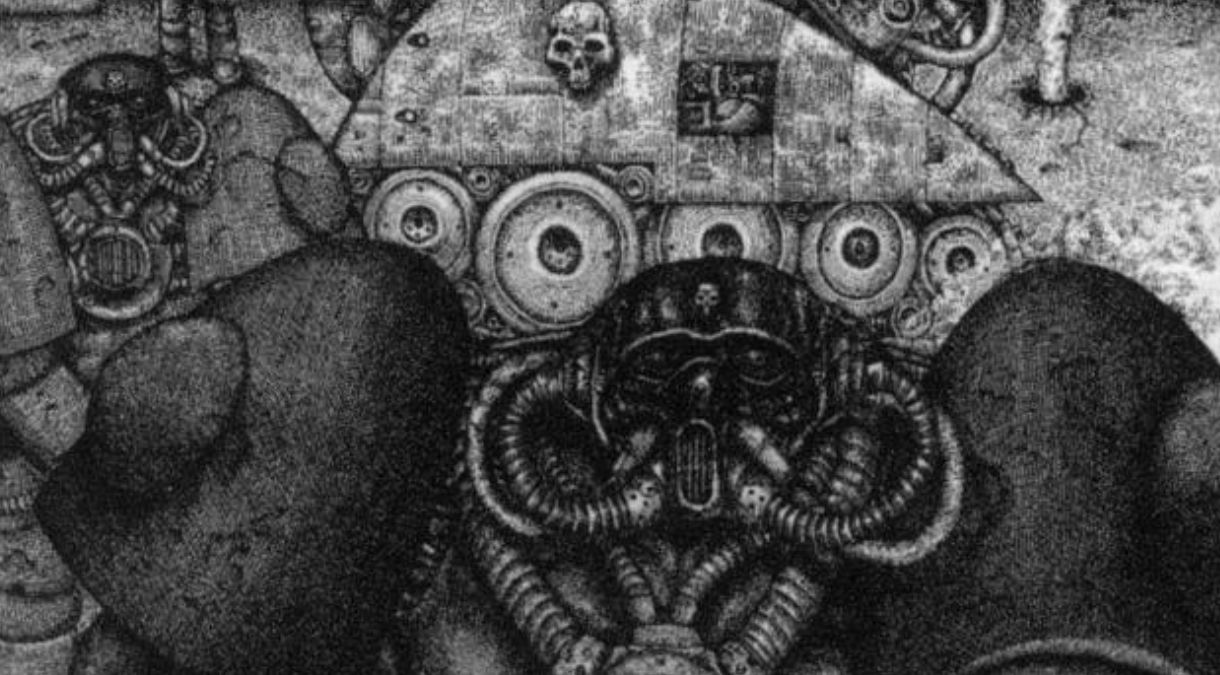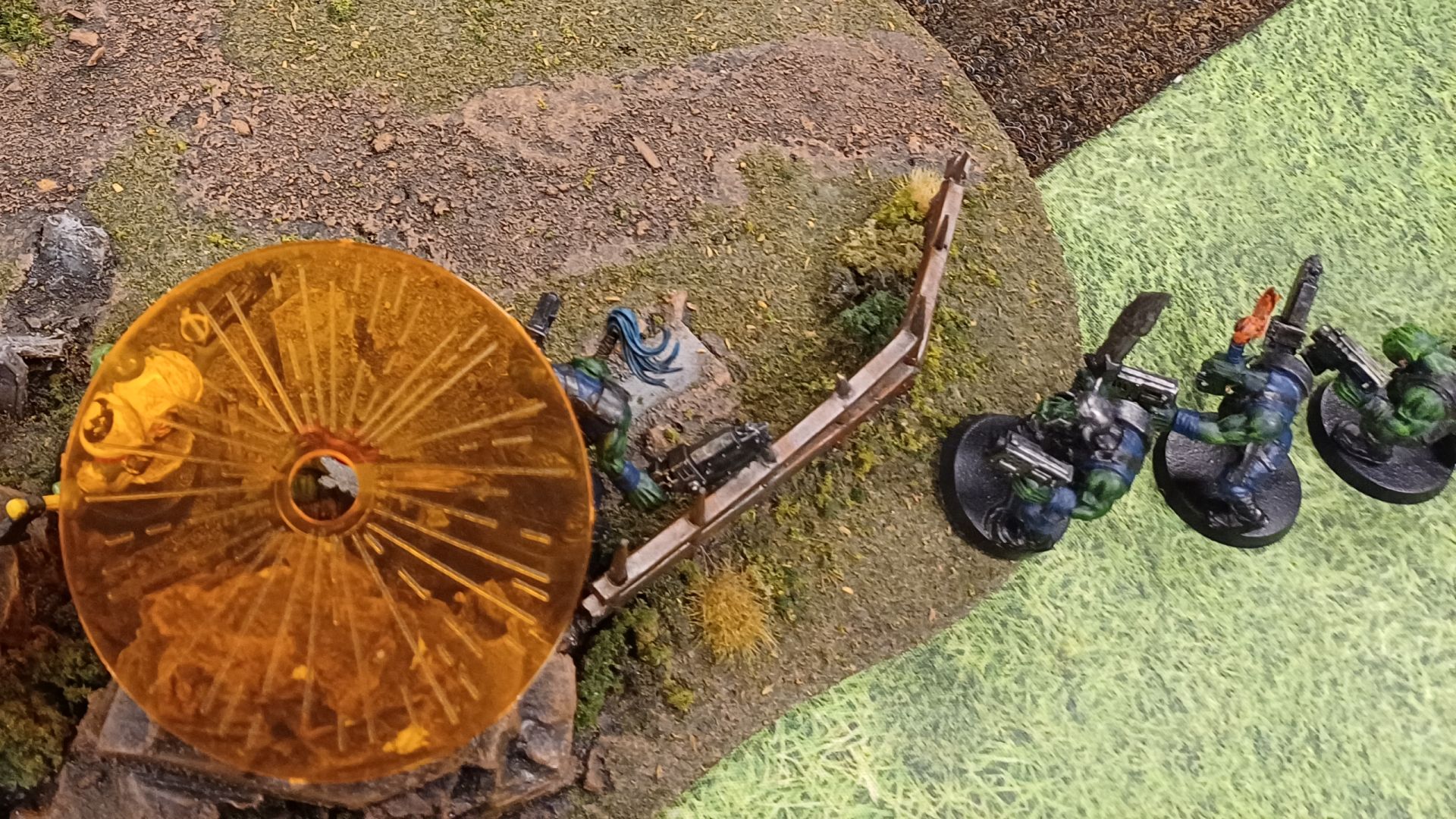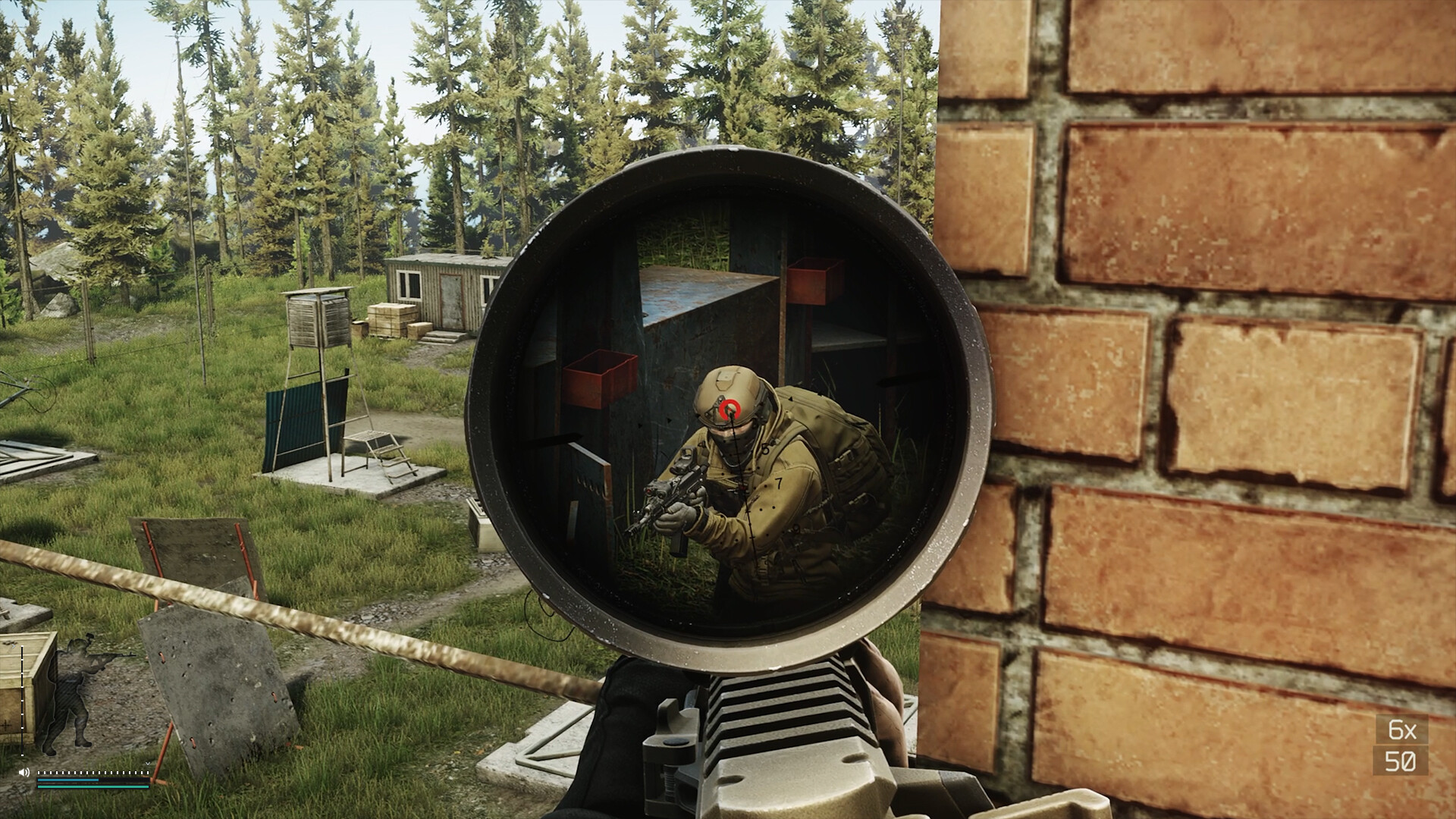How does Warhammer 40,000's first edition hold up today?
The far future looked different in the 1980s.
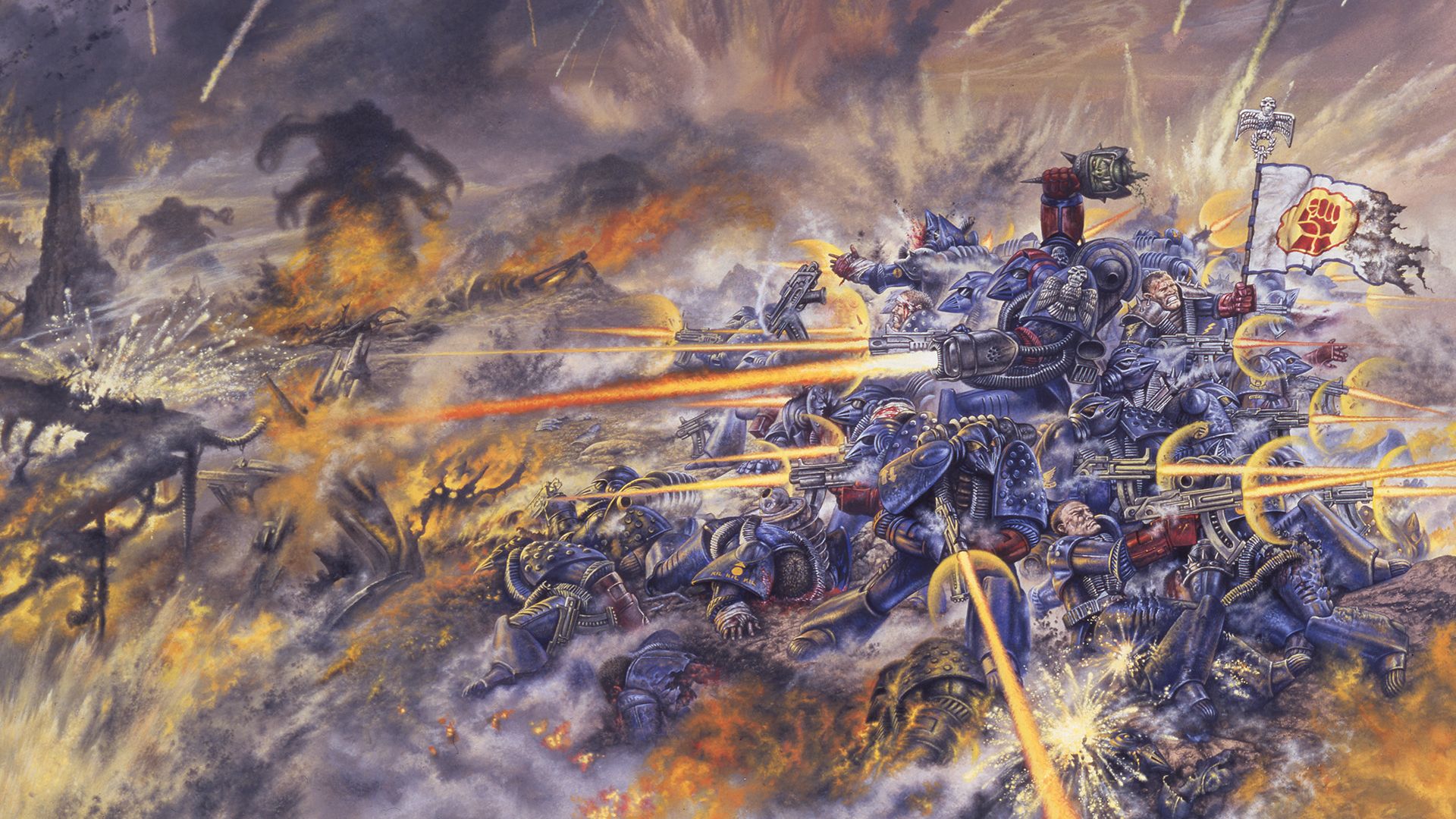
In 1992, Games Workshop was subject to a management buyout backed by a private equity firm, saddling it with massive amounts of debt. In the years that followed, the company looked at players' wallets like a dog looks at a string of sausages. It was not a good time to be a young lad with a dream of some day owning an army of Blood Angel space marines.
But before that was a halcyon time when Warhammer 40,000 had a reputation for being about wacky warbands rather than epic armies that cost an arm and a leg to acquire. A time when nobody expected you to have the right models because half the things in the rulebook didn't even have models yet. That said, the first edition of Warhammer 40,000 was supposedly a complete mess rules-wise—borderline unplayable without a degree from Wargame University. How true are these things?
To find out I dove into the rulebook and played 40K's first edition. Just how different were things back in 1987, the year that gave us other such significant cultural events as Ronald Reagan's speech challenging Mikhail Gorbachev to tear down the Berlin Wall, and also Beverly Hills Cop 2?
The first thing people will tell you about Warhammer 40,000 first edition, subtitle: Rogue Trader, is that it suggests you play with a "Games Master," an amiable third-party who can settle rules disputes, control neutral units, keep track of hidden troops, and help decide where to place the hills made of styrofoam painted green. Combined with an emphasis on having a narrative for each scenario and a loosey-goosey approach to concepts like balance, this makes 40K seem more like an RPG to players brought up on the competitively balanced miniatures gaming of today.
The truth is that suggesting you play with a referee wasn't uncommon in old school wargames, and also that lots of people didn't use them anyway. The older guys at the gaming club I joined as a kid played 40K without Games Masters, and used army lists from White Dwarf magazine and the many supplements for first edition to play it in a way that would be familiar to anyone who saw 40K in its subsequent editions. They had smaller but still fairly uniform armies of space marines and orks and eldar, and they lined them up on opposite sides of the table to shoot at each other. People in the past put their trousers on one leg at a time, just like us—even in the unimaginably distant time of the late 1980s and early 1990s.
What was different was the rules. Playing today, a bunch of things stand out as being unique. One is the emphasis on facing, a detail later editions largely ignore in favor of having everyone able to spin freely and aim at anything in a 360-degree arc around them. In first edition you can only shoot in a 90-degree arc in front of you, and you get one free 90-degree turn per move. If you want more than that you have to pay half an inch of movement for every subsequent 90 degrees or part thereof.
This means flanking actually matters. Playing the Battle at the Farm, the orks-vs-marines scenario that comes with the rulebook, I positioned my orks to come at the marines from two angles. When the marines took out a squad attacking from the left, other marines still facing in that direction couldn't do anything about the orks coming at them from the right until next turn when they had a chance to pivot.
Keep up to date with the most important stories and the best deals, as picked by the PC Gamer team.
My opponent, who plays the current edition of 40K (I dropped out years ago and mostly get my fix from the videogames and books), was charmed by this and wished it was a rule that had stuck around. He said the same about the way troops could elect to stand-and-shoot when charged, getting a panicky shot off at a penalty, and about blast templates for explosive weapons, which are just fun to place over three potentially doomed guys.
A less charming difference was the Reserves phase, a common feature of the early Warhammer family of games, in which units who hadn't shot and weren't in combat could take an extra move to help them get closer to the action. Later editions would collapse that into the Movement phase—a sensible simplification.
Another difference was the stat line, which in common with early editions of Warhammer Fantasy Battle gave everyone scores for Intelligence, Cool, and Willpower. Intelligence determined which equipment a unit could operate, Cool was rolled on to resist psychological effects like fear and terror, and Willpower was for using and resisting psychic powers. Another case where simplification was a clear win.
Looking at the stats for our troops, space marines seemed a lot closer to baseline humanity than they are now. They even had a Toughness of 3 like an ordinary Imperial soldier, though that was quickly bumped up to 4 in one of the many White Dwarf articles adding to and revising 40K.
Our battle ran smoothly, though we didn't have any vehicles and so avoided one of the more complex parts of the system. Vehicles have to worry about their Turn Radius Ratio, a number you multiply by their Speed to determine the radius of the arc they turn on while moving a distance equal to said Speed. No, thank you.
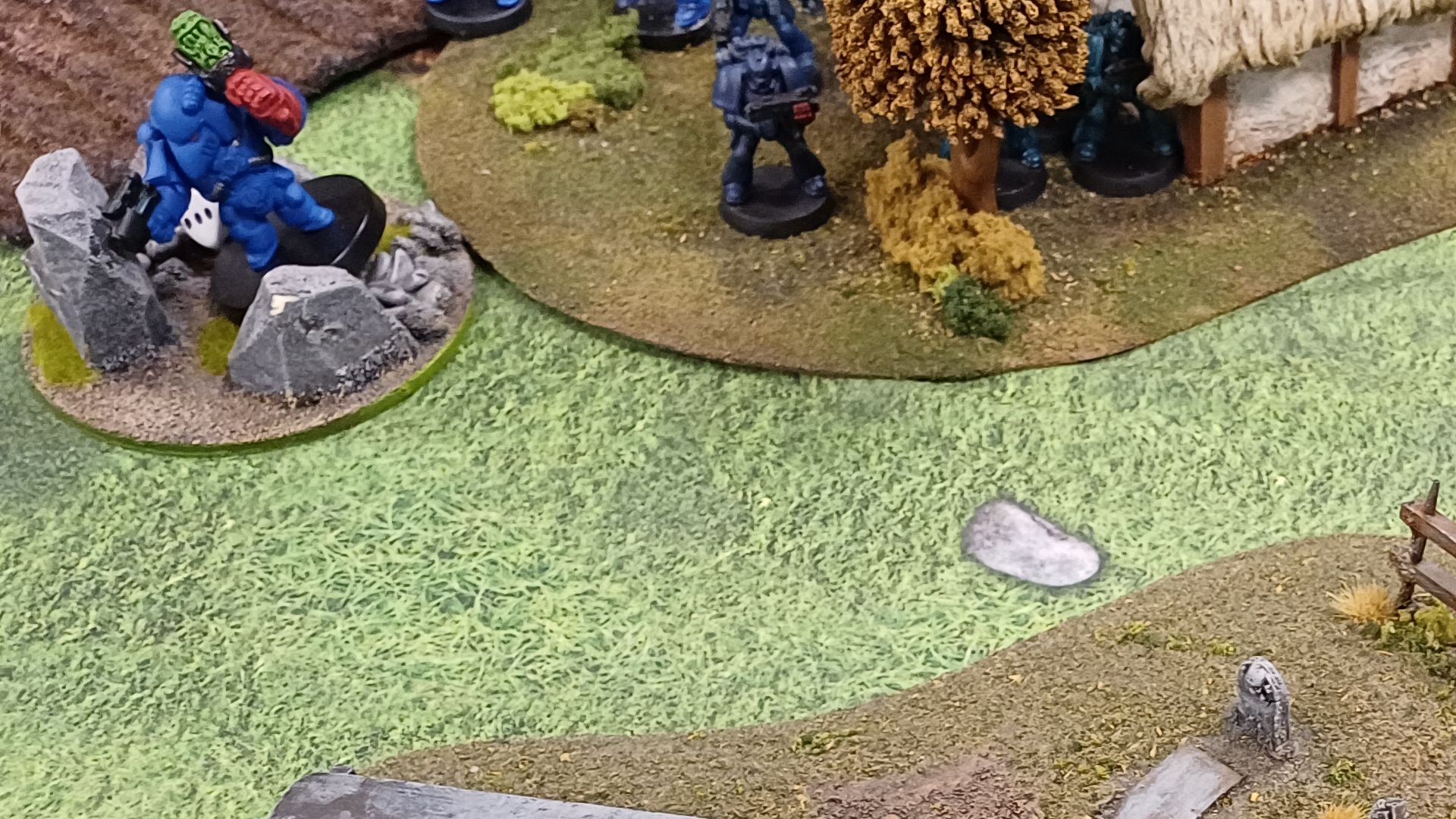
The marines' leader, represented here by a chibi version of the marine from the cover art I picked up in a Warhammer store in Shinjuku, took some early shots from the orks but managed to survive the rest of the battle on a single Wound point by using the follow-up rule to always be in combat—since you can't fire into combat in first edition and he was an absolute machine in melee, he took out half the orks by himself.
Given first edition's whimsical approach to balance it's not surprising the orks lost, and not just because I was playing them. Their army's worth almost 100 points less. But since this was designed to be your first game of 40K, it's worth letting the "good guys" get in a win since so much of the game's storyline is about stomping them into the dirt.
The 40K of 1987 is different to the way it's played today, with less minis on the table and more individualization among them—especially with the random equipment lists full of oddities, like Inquisitors having a 90% chance of starting the game with a pocket-sized torture implement called a porta-rack. Games like it are still around, though. It feels more like an ancestor of Games Workshop's skirmish games. Rather than being lost in time, the spirit of 40K first edition has been preserved, only now it's called Necromunda.

Jody's first computer was a Commodore 64, so he remembers having to use a code wheel to play Pool of Radiance. A former music journalist who interviewed everyone from Giorgio Moroder to Trent Reznor, Jody also co-hosted Australia's first radio show about videogames, Zed Games. He's written for Rock Paper Shotgun, The Big Issue, GamesRadar, Zam, Glixel, Five Out of Ten Magazine, and Playboy.com, whose cheques with the bunny logo made for fun conversations at the bank. Jody's first article for PC Gamer was about the audio of Alien Isolation, published in 2015, and since then he's written about why Silent Hill belongs on PC, why Recettear: An Item Shop's Tale is the best fantasy shopkeeper tycoon game, and how weird Lost Ark can get. Jody edited PC Gamer Indie from 2017 to 2018, and he eventually lived up to his promise to play every Warhammer videogame.
You must confirm your public display name before commenting
Please logout and then login again, you will then be prompted to enter your display name.
